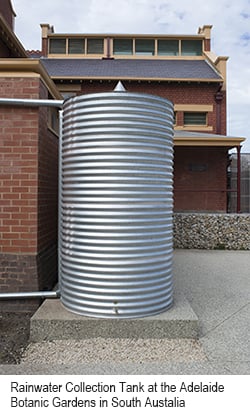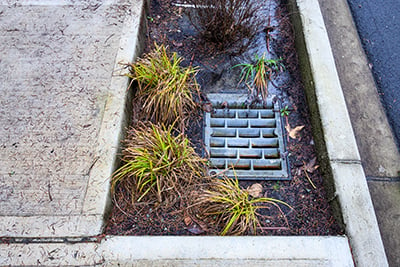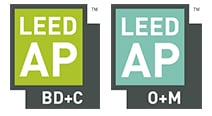By Libby Dunne
Sustainability Analyst
Sustainable Investment Group (SIG)
 April showers bring May flowers! Spring-time storms help to create beautiful and lush landscapes as well as replenish our freshwater water bodies. However, stormwater run-off can be detrimental for urban water bodies, as well as downstream river systems. Increased urbanization and development have created massive landscapes of impervious substrate. This means that when it rains, water is unable to absorb into the ground because it is now covered in asphalt or roofs. This forces the water to run-off over these surfaces, picking up chemicals, bacteria, and pollutants along the way. These are then deposited into a nearby water source once the rainwater reaches it. Additionally, since water cannot absorb into the ground naturally in these hardscape environments, storms tend to flood river systems, having detrimental impacts on river habitats as well as our economy. Collecting and reusing rainwater can help to reduce the amount of run-off in urban areas, therefore reducing the number of contaminants entering our water systems. This article will discuss two ways to help prevent this issue: water harvesting and rainwater gardens.
April showers bring May flowers! Spring-time storms help to create beautiful and lush landscapes as well as replenish our freshwater water bodies. However, stormwater run-off can be detrimental for urban water bodies, as well as downstream river systems. Increased urbanization and development have created massive landscapes of impervious substrate. This means that when it rains, water is unable to absorb into the ground because it is now covered in asphalt or roofs. This forces the water to run-off over these surfaces, picking up chemicals, bacteria, and pollutants along the way. These are then deposited into a nearby water source once the rainwater reaches it. Additionally, since water cannot absorb into the ground naturally in these hardscape environments, storms tend to flood river systems, having detrimental impacts on river habitats as well as our economy. Collecting and reusing rainwater can help to reduce the amount of run-off in urban areas, therefore reducing the number of contaminants entering our water systems. This article will discuss two ways to help prevent this issue: water harvesting and rainwater gardens.
What is rainwater harvesting?
 Rainwater harvesting systems comprise of four main components. First, a collection method is required to collect the rainwater. This can be done using gutters to capture water falling on the roof of a building, or curbs and storm cutters to capture water falling on a street, driveway, or parking lot. The amount of rainwater that can be captured is dependent on the source area (usually the square footage of a building’s roof) and the rain accumulation. Next, the rainwater must be stored. The two most common ways to store captured rainwater are in a cistern or in a pond. Third, the water must be filtered to remove any contaminants that the water may have picked up after hitting the ground. The amount of treatment or filtration required depends on the intended use of the collected rainwater. Finally, there must be some sort of distribution method to get the rainwater out of storage and put to use. Some common uses for reusing rainwater include:
Rainwater harvesting systems comprise of four main components. First, a collection method is required to collect the rainwater. This can be done using gutters to capture water falling on the roof of a building, or curbs and storm cutters to capture water falling on a street, driveway, or parking lot. The amount of rainwater that can be captured is dependent on the source area (usually the square footage of a building’s roof) and the rain accumulation. Next, the rainwater must be stored. The two most common ways to store captured rainwater are in a cistern or in a pond. Third, the water must be filtered to remove any contaminants that the water may have picked up after hitting the ground. The amount of treatment or filtration required depends on the intended use of the collected rainwater. Finally, there must be some sort of distribution method to get the rainwater out of storage and put to use. Some common uses for reusing rainwater include:
- Use in irrigation or sprinkler systems
- Refilling fountains and fishponds
- Refilling swimming pools
- Use in toilets and washing machines
- Washing vehicles or equipment
There are many different benefits for capturing and reusing rainwater. First, capturing rainwater reduces the amount of run-off, therefore reducing flooding and pollution of downstream waters. Additionally, it helps to conserve potable water for essential uses and reduces the stress on the freshwater supply. Once a rainwater capture system is built, it requires little maintenance and is a continual and reliable source of free water. Building rainwater collection systems can also help to increase public awareness regarding the benefits of rainwater harvesting.
What are rainwater gardens?
 A rainwater garden is a sunken garden that is designed to capture the stormwater run-off from surrounding surfaces. Rainwater gardens have been shown to decrease flooding in the surrounding area and reduce water pollution of downstream receiving waters, in addition to beatifying the landscape. Rainwater gardens are a low maintenance and cost-effective way to reduce and filter run-off in urban landscapes by filtering water, providing nutrients to plants, and replenishing groundwater reserves. These environments are highly effective at filtering and absorbing water, as shown by the fact that most rainwater gardens absorb all the water they receive within 24 hours of receiving rain. While rainwater gardens cannot capture water to be reused, they do help to reduce the environmental impact of stormwater run-off in urban environments as well as provide a habitat for plants and animals. Rainwater gardens create a lively habitat for butterflies and birds, yet are not suitable for more harmful wildlife such as mosquitos. Therefore, rainwater gardens not only improve their environment by their impact on local hydrology, but they also help to foster a community of insects and birds that otherwise could not survive there (particularly in urban landscapes).
A rainwater garden is a sunken garden that is designed to capture the stormwater run-off from surrounding surfaces. Rainwater gardens have been shown to decrease flooding in the surrounding area and reduce water pollution of downstream receiving waters, in addition to beatifying the landscape. Rainwater gardens are a low maintenance and cost-effective way to reduce and filter run-off in urban landscapes by filtering water, providing nutrients to plants, and replenishing groundwater reserves. These environments are highly effective at filtering and absorbing water, as shown by the fact that most rainwater gardens absorb all the water they receive within 24 hours of receiving rain. While rainwater gardens cannot capture water to be reused, they do help to reduce the environmental impact of stormwater run-off in urban environments as well as provide a habitat for plants and animals. Rainwater gardens create a lively habitat for butterflies and birds, yet are not suitable for more harmful wildlife such as mosquitos. Therefore, rainwater gardens not only improve their environment by their impact on local hydrology, but they also help to foster a community of insects and birds that otherwise could not survive there (particularly in urban landscapes).
How does rainwater capture connect to building certification programs?
 LEED BD+C has a credit focused on rainwater management. It rewards projects for retaining a majority of the rainwater that falls through collection methods or rainwater gardens. Additionally, LEED O+M has a credit that rewards projects for completing annual inspections and maintenance on their rainwater management system. WELL currently has a beta credit focused on creating proper design and operation strategies for the development and maintenance of rainwater capture and reuse systems. If you are interested in learning more about the benefits of rainwater capture as well as how it can aid in earning a green building certification, feel free to reach out to us through our ‘contact us’ page or by calling us at 404-343-3835.
LEED BD+C has a credit focused on rainwater management. It rewards projects for retaining a majority of the rainwater that falls through collection methods or rainwater gardens. Additionally, LEED O+M has a credit that rewards projects for completing annual inspections and maintenance on their rainwater management system. WELL currently has a beta credit focused on creating proper design and operation strategies for the development and maintenance of rainwater capture and reuse systems. If you are interested in learning more about the benefits of rainwater capture as well as how it can aid in earning a green building certification, feel free to reach out to us through our ‘contact us’ page or by calling us at 404-343-3835.
References
https://www.watercache.com/education/rainwater-harvesting-101
https://greywateraction.org/rainwater-harvesting/
http://www.stormwater.allianceforthebay.org/take-action/installations/rain-gardens
https://www.fewresources.org/water-scarcity-issues-were-running-out-of-water.html
© 2020 Sustainable Investment Group (SIG). All rights reserved.



